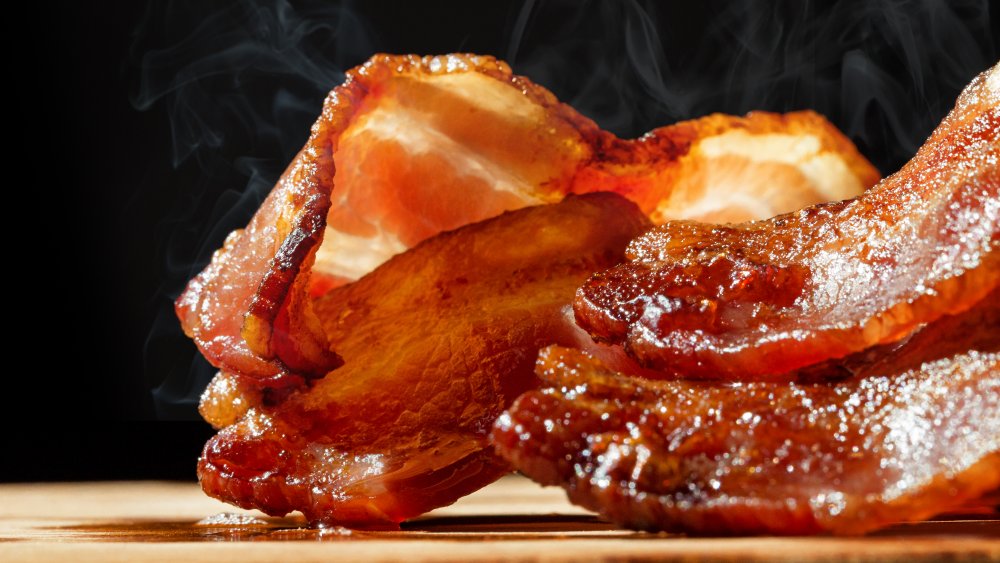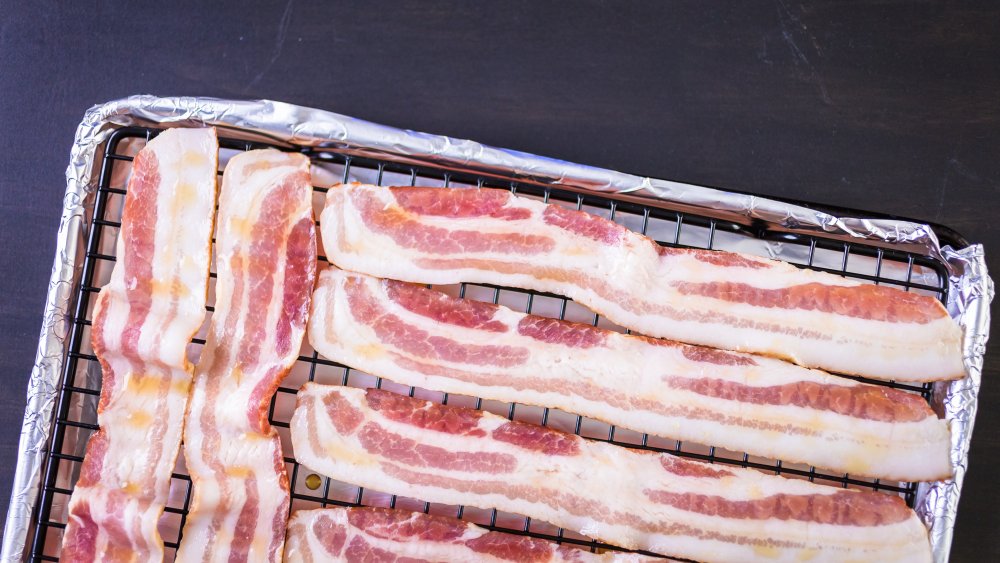The One Ingredient That Will Change Your Bacon Forever
Hickory-smoked bacon, slab bacon, maple bacon, Canadian bacon — no matter the cut, bacon is downright delicious. This salt-cured meat from the belly or the back of a pig (or sometimes turkey) is already a lauded accompaniment for eggs, sandwiches, pizza, soups, and more. It's crispy and chewy, fatty and salty, savory, and sweet — yes, sweet.
Traditionally, bacon contains a small amount of sugar from the curing process, unless you're opting for a sugar-free variety (via HuffPost), though Cooking Light points out for the health-conscious crowd that bacon's sugar content is negligible. "It's mostly fat to begin with," says Jamie Vespa, Cooking Light's assistant nutrition editor and registered dietitian.
But what if bacon contained even more sugar? There's a growing consensus that sugar — and brown sugar specifically — is the one ingredient that will change your bacon for the better. When dusted with brown sugar and baked until crisp, bacon develops the perfect glaze (via Bon Appétit).
Pour some sugar on your bacon
Making life-changing brown sugar bacon is super simple. Bon Appétit's recipe calls for 1 pound thick-cut bacon and 1/3 cup brown sugar. Arrange the slices in a single layer on a lined baking sheet and coat evenly with sugar. Then bake in a 400 degree Fahrenheit oven for 15 to 18 minutes, depending on your desired crispiness.
To spice things up a bit, Food Network's Paula Deen adds chili powder to her brown sugar bacon. Martha Stewart uses 1 1/2 teaspoons of ground black pepper. Options abound, so don't limit yourself and try something new. The Spruce Eats suggests mixing it up by stirring cinnamon into the sugar or by combining maple syrup along with brown sugar. For eaters looking for a spicy kick, try adding cayenne, Sriracha, or sambal seasoning.
Any way you make it, brown sugar bacon is sweet and golden and perfect for snacking or breakfast-as-usual aside a pile of pancakes or a tower of French toast. The Spruce Eats also recommends adding crispy crumbles to burger mixes or cornbread batter, or wrapping slightly less-cooked and still flexible slices around meatloaf or pork tenderloin.

